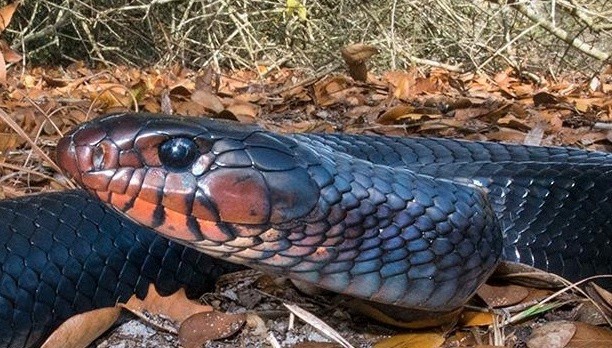
A discovery of a young wild-hatched Eastern Indigo snake in the state of Alabama marks the success of the Eastern Indigo Project, an intensive program made specifically to reintroduce and re-establish a viable population for the rare snake.
In more than 60 years, this is only the second time that the elusive species has made appearance in the country, the first wild-born found in 2020, CNN reported. In 2006, the Eastern Indigo project started naturally pairing those purposefully released in Conecuh National Forest, then began releasing the captive-raised indigos four years later.
"The snake found yesterday indicates the project is resulting in some thriving and reproducing indigos, just what we wanted!" said the Alabama Wildlife and Freshwater Fisheries Division on Thursday via Facebook. "Reintroducing a species to its native range is a daunting task, and we celebrate each step of its success!"
Snakes as crucial element of the ecosystem
Animal biologist Jim Godwin of the Alabama Natural Heritage Program administered by the Auburn University Museum of Natural History told CNN that Eastern Indigo snakes were "historically the apex predator in the longleaf pine forests where they live", and therefore essential in the longleaf pine ecosystem.
The largest snake native to the US used to slither throughout Alabama, but went extinct in the state in the 1950s due mostly to habitat loss, according to Outdoor Alabama. The first evidence of its reproduction in the wild was discovered in Conecuh National Forest.
According to Godwin, the snake's decline has a "domino effect" on other species in the ecosystem, which is why Alabama conservationists launched a project to reintroduce and create a "healthy and viable population" in the state.
Eastern Indigo snakes prey on a variety of small mammals, amphibians, lizards, and many species of venomous snakes, including copperhead.
"Halfway mark" in the reintroduction
Traci Wood, the Habitat and Species Conservation Coordinator with the Alabama Wildlife and Freshwater Fisheries (WFF) Division, claims that they are "kind of at the halfway mark in the reintroduction."
"It's very exciting to see verification of reproduction at this stage of the project," Wood added.
According to Wood, the recovery of a federally listed species considered as an experimental population "was a lot of groundbreaking work." They hope to influence other states just like in Florida which has now worked on a reintroduction program largely based on lessons learned at Conecuh.
While it is currently not possible to estimate the total number of Eastern indigo snakes that are in the Conecuh habitat, the "recaptures and verification of reproduction is data that will be useful in the future so that someday we may be able to predict how many individuals may be in the wild," Wood said.
The project team plans to monitor the burrows of gopher tortoises where the adult indigo snakes breed during the colder months, in hopes of identifying the animals.
"Physically holding a wild species that hasn't been documented in Alabama in more than 60 years gives us high hopes for what we may see when we reach our goal of 300 snakes released," she said.
Related article : Newfound Species! Beautiful Rainbow-Colored Fish Discovered in Maldives' 'Twilight Reefs'
© 2026 NatureWorldNews.com All rights reserved. Do not reproduce without permission.





